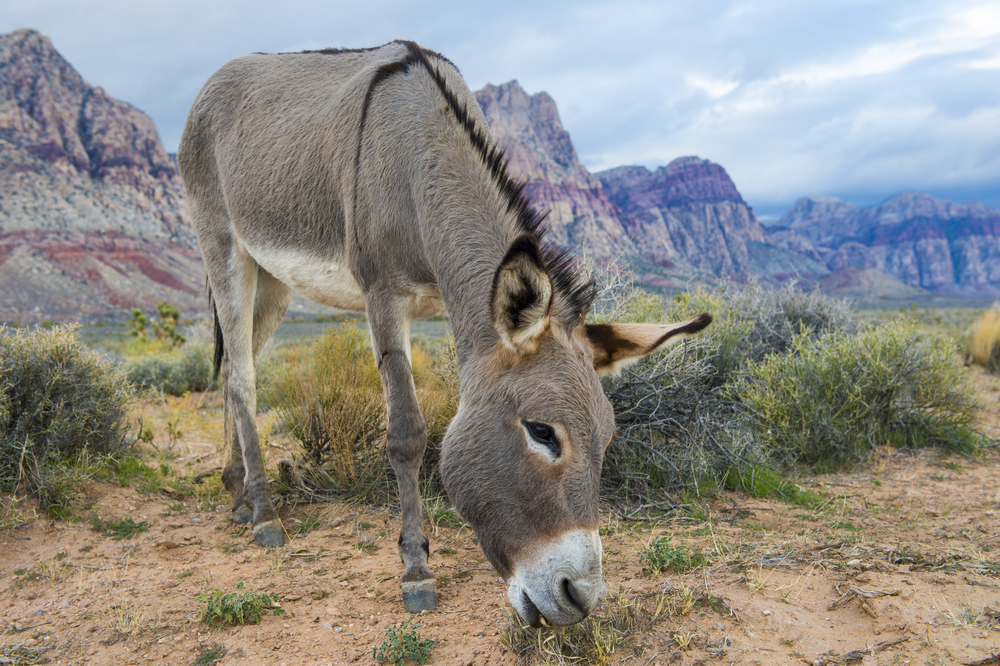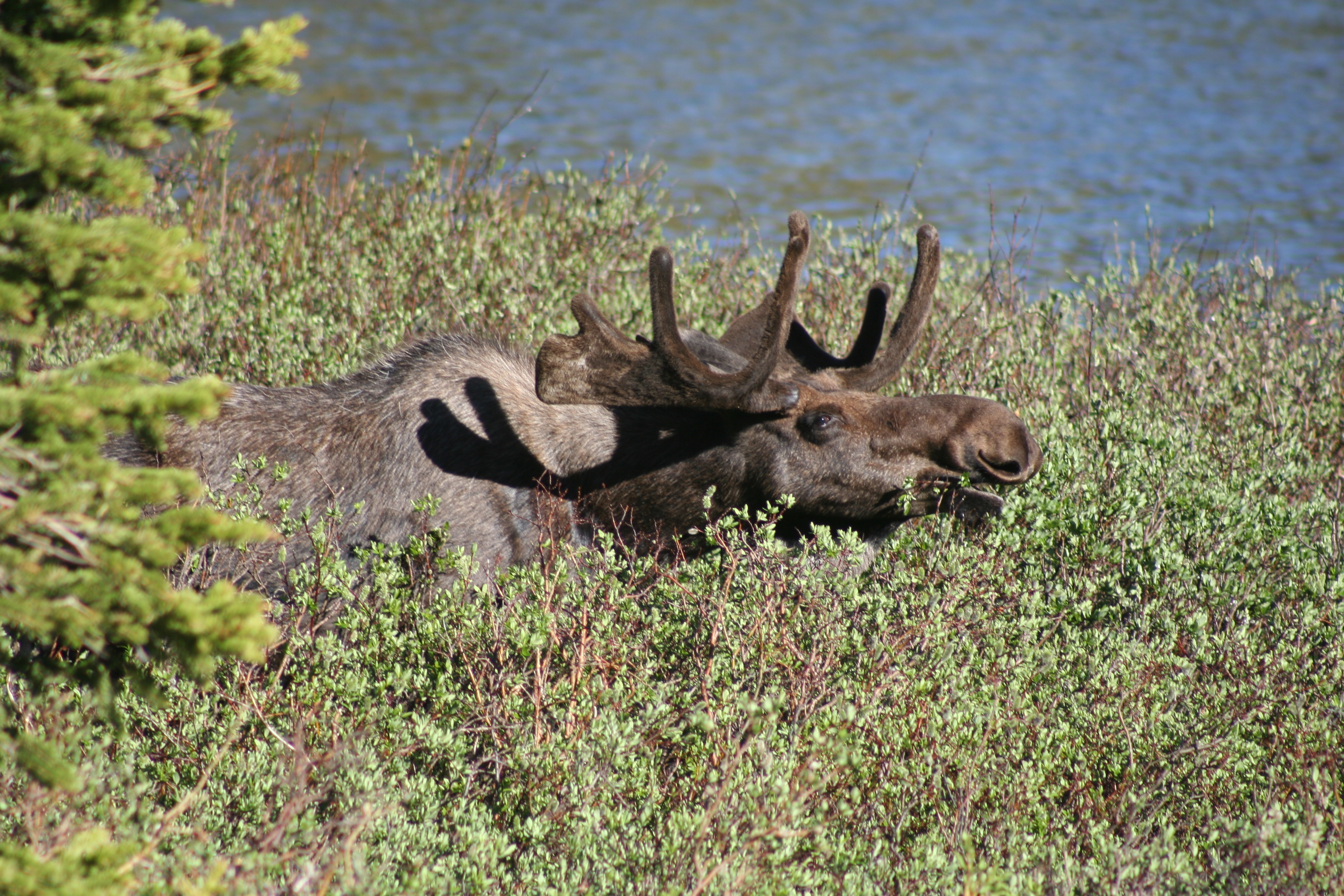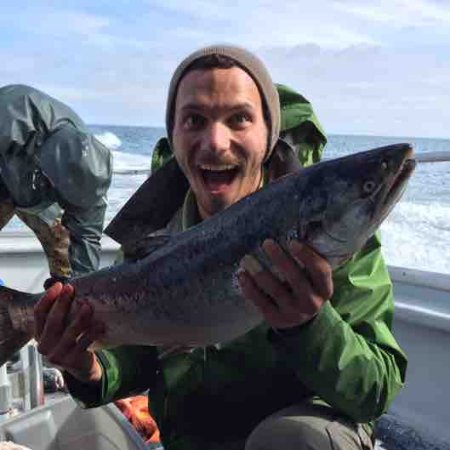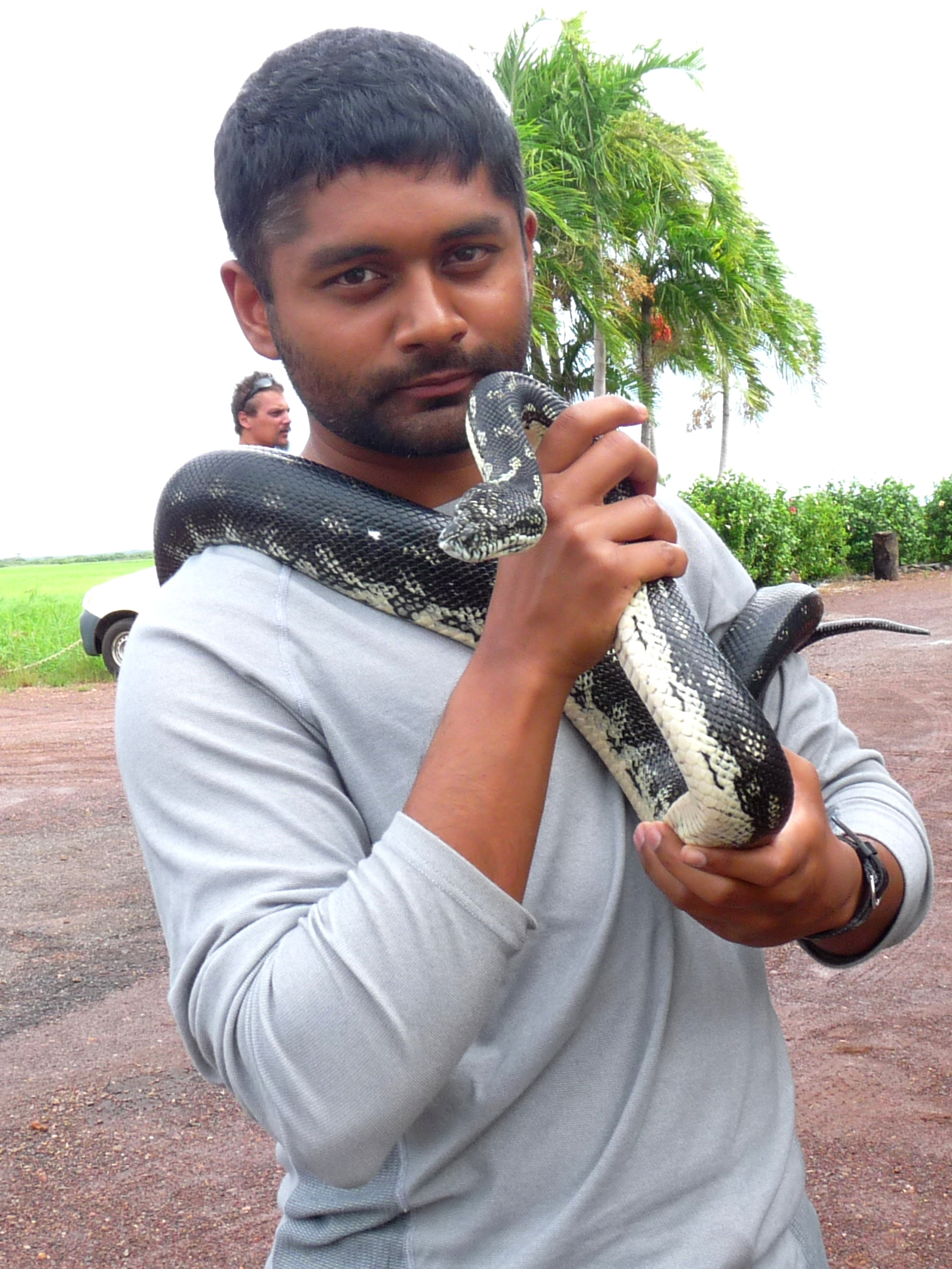Researchers at the NREL seek to understand how and why wildlife populations change over time across the landscape. NREL scientists conduct research collaboratively with social and environmental scientists to determine best management practices for wildlife in the modern world.
NREL scientists are involved in developing creative and effective ways to conserve and restore habitats, working alongside wildlife managers and various stakeholders to find common ground.
Introduction
Expanding human populations threaten wildlife species across the globe. Humans have altered landscapes leading to a decline in species biodiversity due to land fragmentation from development to changes in food availability resulting from climate change. Wildlife ecologists study the demography, habitat, and behavior of wildlife, while also assessing the effects of humans on wildlife populations. NREL scientists seek to understand how people rely on wildlife and resolve human-wildlife conflicts. They are involved in developing creative and effective ways to conserve and restore habitats, working alongside wildlife managers and various stakeholders to find common ground.
At NREL, researchers use innovative methods to expand knowledge of wildlife ecology and management. Researchers evaluate the spatial relationships of wildlife and resources over time by developing computer models based on experimental data, using an interdisciplinary approach to answer scientific questions and inform human-wildlife issues. Additionally, NREL focuses on the training of students and practitioners, and takes pride in empowering the next generation of wildlife ecologists and managers. The following projects highlight the importance of NREL’s wildlife research, including the effects of land fragmentation and resource development on wildlife populations, refined estimation methods for calculating wildlife population size, the human-wildlife conflict outside of National Parks in Southern and Eastern Africa and a citizen science program that engages the public in scientific research.
Land Fragmentation and Resource Extraction
in the American West
Human development and its impact on population and species biodiversity
Sage-grouse are an iconic bird species in the American West that has become the focal point for land management controversy. Sage-grouse populations have declined over the past century due to habitat degradation from land fragmentation, oil and gas development, and environmental change. Sage-grouse habitats overlap with areas of human activity, and there has been an effort to engage wildlife managers, conservationists, politicians, recreationists and land developers in the protection and conservation of the species.
NREL has been involved in Sage-grouse research, with Dr. Cameron Aldridge at the forefront, focusing on grassland and sagebrush systems in the American West and identifying the species range and demographics. Dr. Aldridge, in collaboration with the Park Service, Fish and Wildlife, U.S. Geological Survey (USGS), Bureau of Land Management and the Department of the Interior, has developed habitat restoration best practices informed by the ecosystem complexities of the Sage-grouse habitat.

Working alongside Dr. Aldridge, Drs. David Edmunds, Julie Heinrichs and Adrian Monroe explore the demographics and spatial distribution of Sage-grouse using a variety of methodologies. Dr. Edmunds’ research focuses on characterizing Sage-grouse populations. Utilizing spatial ecology techniques, he has built methods that delineate populations on a small scale, to be used in making predictions on a larger scale. Dr. Heinrich’s research evaluates Sage-grouse communities in a changing environment by simulating population-level outcomes as the species interact with different stressors such as land development and climate change. Dr. Monroe addresses the relationship between Sage-grouse and livestock habitats by reviewing public grazing records and livestock management patterns, and comparing them to Sage-grouse sightings and nesting areas. By compiling behavioral, demographic, and population-level data to stakeholders and regulatory agencies, the work of these four scientists directly influences Sage-grouse management practices.
Estimating Population Size in Wildlife Communities
Studying the grazing ecology of ungulate species to assess habitat viability
NREL has been conducting research on population dynamics and grazing ecology of ungulates (hooved animals) and domestic livestock in North America and Africa for many years. In the Southwestern United States, Drs. Kate Schoenecker and Sarah King have initiated research on wild burros (within the equid family), commonly known as donkeys. As wild burros are an understudied species, NREL researchers, in collaboration with USGS and the Bureau of Land Management, focus on creating a better understanding of wild burro population demography and social and reproductive behavior. Their results explore how populations differ based on their habitat, and provide wildlife managers with insight into best management practices and innovative ways to control population size. According to Dr. Schoenecker, “this research has larger implications. The wild burros here in the US are a domesticated variety of the African wild ass, which is a critically endangered species. This work will impact the conservation of endangered equids, especially wild asses, globally”. Dr. King, who is co-chair of the IUCN equid specialist group, believes that her work with Dr. Schoenecker advances scientific research in this field because they have refined non-intrusive methods to estimate population sizes within wildlife communities.

NREL’s Dr. Paul Evangelista conducts research on the African wild ass in Ethiopia and Somaliland. He plans to collaborate with Drs. Schoenecker and King to test potential habitat suitability models on US wild burros in their local ranges, with the goal to implement these methodologies on a larger scale in Ethiopia and Somaliland. These methodologies will aide wildlife managers in the US and abroad in making informed management decisions for both endangered and non-endangered equids.
Dr. Tom Hobbs is currently working with Rocky Mountain National Park to develop statistical models for analyzing census data on a growing moose population. The central problem in counting moose is that there are always individual animals within a census area of dense forest and shrub cover that are not detected by observers. Dr. Hobbs is applying Bayesian techniques to correct census estimates and account for individuals that are missed by observers, and the results will be coupled with models of moose population dynamics to support management decisions.
Land Appropriation, Endangered Species and the Human-Wildlife Conflict in Sub-Saharan Africa
Researchers use an interdisciplinary approach to address the complex questions surrounding wildlife management
In addition to his work with the African wild ass, Dr. Paul Evangelista studies the Mountain Nyala, an endangered antelope species endemic to Ethiopia. His lab has studied the demographics and habitat of the species by using species distribution models. Their work has identified new population groups that have never been reported, increasing the species count from 1,500 to 4,000 individuals. From their research, they have been able to produce maps of the Mountain Nyala population extent, which the Ethiopian Wildlife Conservation Authority has used to develop best management practices. In addition, Dr. Evangelista has worked with the Ethiopia Wildlife Conservation Authority and Somaliland Wildlife Department to train park rangers in tracking the Mountain nyala and other antelope species using geospatial technologies so that they can utilize these valuable tools in their wildlife conservation efforts.
Also in East Africa, Dr. Randall Boone, a wildlife ecologist at NREL, has spent the last two decades tracking wildebeest in savanna ecosystems. Dr. Boone has collaborated with other NREL scientists such as Drs. Robin Reid, Tom Hobbs and Kathy Galvin, to understand wildebeest behavior, and assess their ability to move through the landscape. Through collaring animals and utilizing remote sensing techniques, Dr. Boone and his colleagues were able to track migratory patterns over time, and produce spatial maps of the migratory corridors. From these results, it has become clear how environmental factors such as precipitation and fire, in addition to human development, affect wildebeest migration. Their models uncovered that the traditional migratory pathways were broken because of fencing and land fragmentation, and the animals could no longer migrate as before. Dr. Boone explains, “the most important component was in identifying the loss of migratory pathways and using that to try and influence decision-making”. Their results influenced government officials to re-evaluate
making”. Their results influenced government officials to re-evaluate the construction of roads and infrastructure within communities where major migratory pathways are threatened. In the face of climate change, when animals have to move farther distances to find suitable grazing areas, having a clearer picture of their migratory patterns, and making development decisions based on sound research, will aid in the sustainability and survival of the species.
In South Africa, NREL’s Dr. David Bunn has been involved in the human-wildlife conflict surrounding Kruger National Park. His research explores the intersection of race, ethnicity, and conservation management. One particular study looks at the permeability of the Kruger National Park border. This National Park, as Dr. Bunn states, is “one of the largest wildlife reserves, but is the frontline of wildlife conflict”. Because of the park’s permeability, humans and wildlife frequently come into contact, making conservation and management efforts very complex. Currently, there are efforts to create the Great Limpopo Transfrontier Conservation Area, which would include parts of South Africa, Mozambique and Zimbabwe. This Conservation Area would be one of the largest wildlife corridors in Southern Africa, and would help to decrease the negative impacts facing migratory species due to with land fragmentation in the region. Dr. Bunn plays a central role in identifying how local human populations will be included in the development of this Conservation Area. He hopes to address human-wildlife conflicts before they become a problem. Dr. Bunn believes that involving local communities in management solutions is the only way they will succeed: “people need a real stake in these areas, otherwise they won’t take it seriously”. Dr. Bunn’s interdisciplinary work plays a large role in making sure all voices are heard within the conversation surrounding wildlife management in Southern Africa.
Forecasting Population Dynamics of Large Herbivores in National Parks
NREL researchers work with wildlife managers in the National Park Service to sustainably manage wildlife populations
Dr. Tom Hobbs and his graduate students have developed models using Bayesian Statistical Methods to predict ungulate population dynamics that are used by wildlife managers in national parks. These models assimilate data from a population census to predict population size and composition change over time. In Yellowstone National Park, the model predicts the dynamics of bison infected with Brucellosis to guide decisions about disease management. The model developed for Rocky Mountain National Park is used to forecast annual changes in elk numbers, and support decisions by wildlife managers on annual culling rates. In addition, supporting policy on culling and fertility control of overabundant white-tailed deer is the goal of the model developed for the National Capital Region. All of these models forecast future behavior of ungulate populations that managers are actively using in making decisions with the goal of sustaining viable, healthy wildlife populations in national parks.

Promoting Citizen Science through Data Collection
Engaging citizens through community-based wildlife monitoring
Community engagement and promoting science is a priority at NREL. Investigators work alongside various community stakeholders and often employ volunteers to assist in scientific data collection. In 2008, NREL’s Dr. Greg Newman created CitSci.org, an initiative to promote citizen involvement in scientific research through an interactive cyber-infrastructure support system. According to Dr. Newman, “people who have projects or questions they want to explore, come to the website and have their story told”. CitSci.org allows the public to engage in science by providing a platform for groups to post scientific questions and for individuals to collect data relating to that question. The platform allows individuals to measure anything, anywhere.
CitSci.org hosts over 400 projects globally. One of the most prominent projects is the Front Range Pika Project that is a citizen science effort to gather baseline data on the current distribution of pikas and their habitats, as well as data on the phenology of snowmelt, growing season, and pika haying activity. To date, the project has almost 7,000 measurements of data, all collected by the community volunteers who can easily upload their findings online. The measurements help the Front Range Pika Project make informed conservation management decisions, while at the same time, empowering the public to play a role in conservation efforts.



